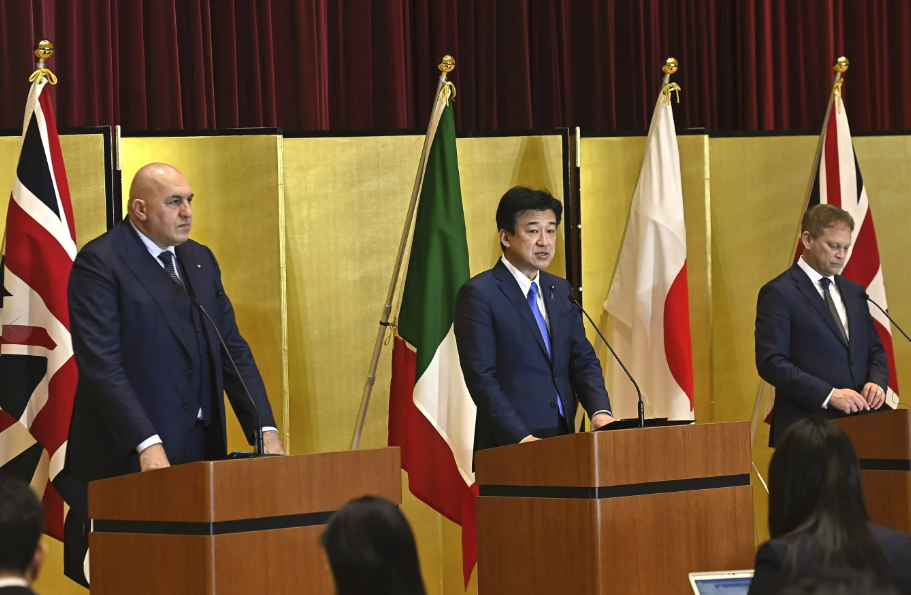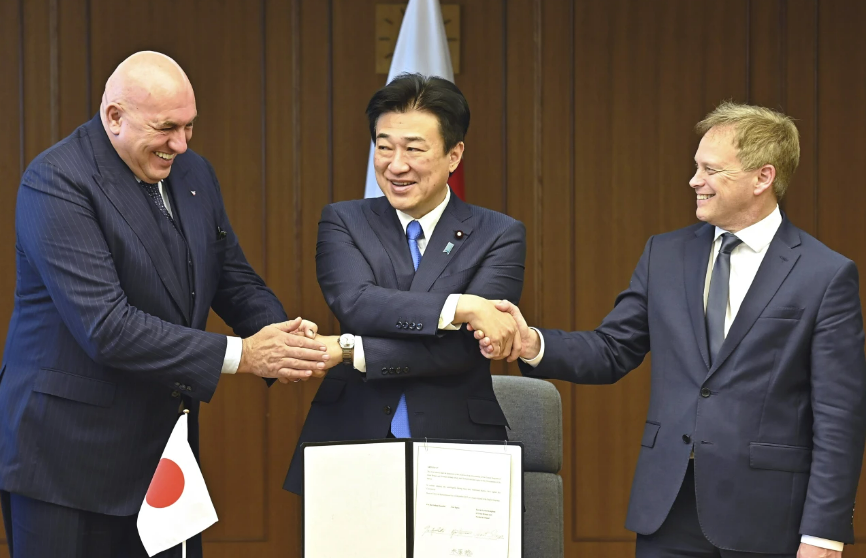
TOKYO (AP) — Japan’s recent decision to greenlight the sale of future next-generation fighter jets to other nations marks a notable departure from the pacifist stance adopted after World War II.
The move, which permits international arms sales, is seen as a strategic step to solidify Japan’s involvement in a collaborative project with Italy and the U.K. aimed at developing a new fighter aircraft. However, it also reflects Japan’s broader efforts to strengthen its defense industry and assert a more active role in global affairs.
At present, Tokyo clarifies that it intends to limit exports to co-developed lethal weapons, primarily the new fighter jets set to debut around 2035.
Here’s a closer look at the significance of this policy shift and the factors driving Japan’s evolving stance on arms exports.
What’s Changing?

The Japanese Cabinet recently endorsed a revision to its guidelines governing the sale of defense equipment abroad, greenlighting the future sale of the envisioned fighter jets. While the government asserts no plans to export other co-developed lethal weaponry, such exports would necessitate Cabinet approval.
Historically, Japan’s pacifist constitution imposed strict limitations on arms exports. However, amid escalating regional tensions, Japan has gradually relaxed these restrictions. In 2014, it began exporting non-lethal military goods, followed by a December 2023 decision to allow sales of certain lethal weapons and components manufactured under licenses from other nations. Notably, this revision enabled Japan to sell U.S.-designed Patriot missiles to the United States.
The recent decision on fighter jets represents a significant milestone, marking the first time Japan will export lethal weapons it co-produces to other nations.
The New Fighter Jet
Japan, in collaboration with Italy and the U.K., is spearheading the development of an advanced fighter jet to replace its aging fleet of American-designed F-2 fighters and the Eurofighter Typhoons used by its partners. This joint endeavor, known as the Global Combat Air Program (GCAP), aims to enhance Japan’s defense capabilities, particularly in response to mounting regional tensions.
Why the Shift in Arms Exports?
The Cabinet cites concerns that the ban on exporting finished products would impede efforts to develop the new fighter jet, relegating Japan to a supporting role. Additionally, Italy and the U.K. are keen on securing sales of the jet to mitigate development and manufacturing costs.
Prime Minister Kishida emphasizes the need to modernize Japan’s approach to avoid project stagnation. Moreover, arms exports offer a means to bolster Japan’s defense industry, historically oriented toward domestic needs. The move aligns with Kishida’s broader agenda to fortify Japan’s military capabilities.
The shift also coincides with Kishida’s upcoming state visit to Washington, where he aims to underscore Japan’s willingness to engage in defense partnerships.
Controversy Surrounding Arms Exports
Japan’s wartime history and commitment to pacifism render the shift in arms exports a contentious issue. Critics question the government’s decision to commit to the fighter jet project without adequate public consultation or parliamentary approval.
Public opinion remains divided, reflecting concerns over Japan’s evolving military posture. To address these apprehensions, the government emphasizes that exports will be limited to co-developed lethal weapons and subject to stringent conditions.
As Japan navigates this policy transition, it remains committed to ensuring that exported weaponry is not utilized in active conflicts, underscoring its commitment to peace and security.
What’s next?
The potential markets for the new fighter jet extend to the 15 countries with which Japan has defense partnership agreements, including notable nations like the United States, Germany, India, and Vietnam. However, it’s worth noting that Taiwan, despite its strategic importance, is currently not under consideration for jet sales, according to a defense official who spoke anonymously due to briefing regulations. As the new export guidelines take effect, there’s a possibility of expanding the approved list to include additional weapons and components.
Prime Minister Kishida’s upcoming visit to Washington in April is expected to pave the way for discussions with U.S. leaders regarding potential collaborations in defense and the weapons industry. This new policy stance may also facilitate Japan’s pursuit of a more significant role in various alliances and regional defense partnerships, such as the AUKUS alliance involving Australia, the United States, and the United Kingdom.
